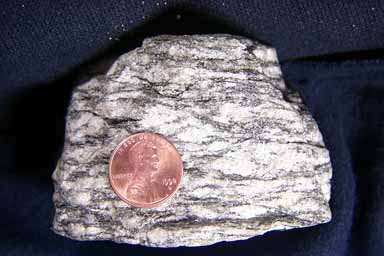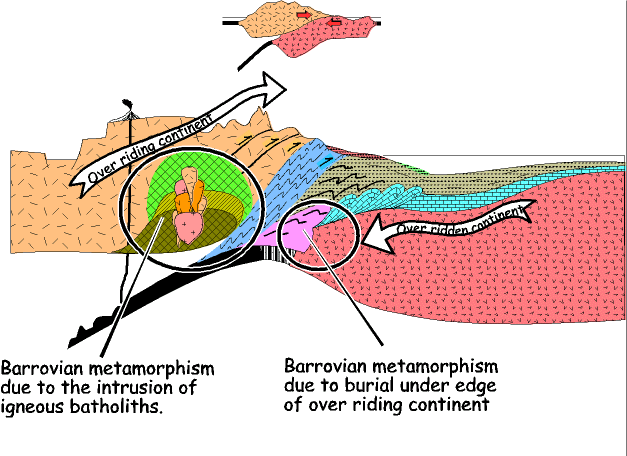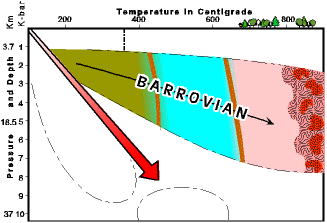|
GNEISS #1 Gneiss - Other specific examples: #1 | #2 | #3 | #4 shale |slate | phyllite | schist | gneiss  Detail of this specimen
Detail of this specimen>>> Return to previous >>> Next specimen Return to: Alphabetical Listing Basic Key Advanced Key |
|||
Composition
|
Description
Banded foliation composed of layers/zones of light colored quartz, feldspar interlayered with layers/zones of dark colored biotite and amphibole. The minerals bands in this specimen are just beginning to develop, but are distinctly separate from each other putting it in the gneissic category. This specimen is not far removed from a schist seen closeup (for example), but the megascopic banding here puts it in the gneiss category. At the other end of the spectrum the banding is very distinct. |
||
Tectonic Association
Gneisses are typically associated with major mountain building events when shales or clay rich sandstones (wackes), or felsic igneous rocks (e.g. granite, granodiorite, etc.) are metamorphosed through depth of burial, and proximity to batholiths (click picture for larger version).

|
Type of Metamorphism
Slates are part of a metamorphic sequence that begins with shale and progresses through slate, phyllite, schist, and gneiss. At the top of this column you can click through rocks showing the changes. Or go to Barrovian metamorphic changes.
|
||
